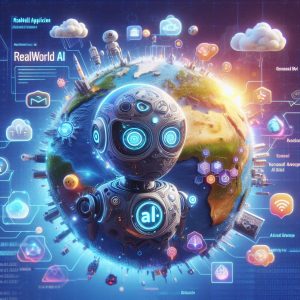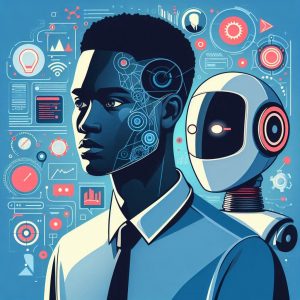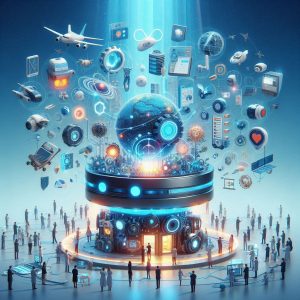 The Future is Now: Top AI Trends to Watch in 2025 is your ultimate guide to navigating the AI landscape.
The Future is Now: Top AI Trends to Watch in 2025 is your ultimate guide to navigating the AI landscape.
The world of AI is vast and complex, with numerous innovations and advancements emerging every day. From natural language processing to computer vision, the possibilities are endless. As AI continues to evolve, it’s crucial to stay informed about the latest developments and trends that will impact various industries and aspects of our lives. In this article, we’ll delve into the most significant AI trends that will dominate 2025 and beyond.
The integration of AI into our daily lives is becoming more pronounced, and its applications are becoming increasingly versatile. With the help of AI, businesses can automate processes, improve efficiency, and make data-driven decisions. As we move forward, it’s essential to understand the key AI trends that will drive this transformation. Whether you’re a business leader, a developer, or simply an enthusiast, this article will provide you with valuable insights into the future of AI and its potential to revolutionize the world.
AI-Powered Automation: The Future of Work

The automation of tasks and processes is one of the most significant applications of AI. By leveraging machine learning algorithms and natural language processing, businesses can automate tasks such as data entry, customer service, and bookkeeping. This trend is expected to continue in 2025, with more companies adopting AI-powered automation to streamline their operations and reduce costs. As AI-powered automation becomes more prevalent, it’s essential to consider its impact on the workforce and the need for workers to acquire new skills to remain relevant.
The benefits of AI-powered automation are numerous, and they extend beyond cost savings and increased efficiency. By automating routine tasks, businesses can free up resources and focus on more strategic and creative pursuits. Additionally, AI-powered automation can help reduce errors and improve accuracy, leading to better decision-making and improved overall performance. As we move forward, it’s essential to explore the possibilities of AI-powered automation and its potential to transform various industries, including healthcare, finance, and education.
Edge AI: The Rise of Decentralized Intelligence

Edge AI refers to the deployment of AI algorithms and models on edge devices, such as smartphones, smart home devices, and autonomous vehicles. This trend is gaining momentum, as it enables real-time data processing and analysis, reducing latency and improving overall performance. In 2025, we can expect to see more applications of Edge AI, particularly in areas such as IoT, robotics, and augmented reality. As Edge AI continues to evolve, it’s essential to consider its potential to enable more efficient and effective decision-making.
The growth of Edge AI is driven by the increasing availability of edge devices and the need for real-time data processing. By deploying AI models on edge devices, businesses can improve performance, reduce latency, and enable more accurate decision-making. Additionally, Edge AI can help reduce the burden on cloud infrastructure, leading to cost savings and improved scalability. As we move forward, it’s essential to explore the possibilities of Edge AI and its potential to transform various industries, including manufacturing, logistics, and healthcare.
One of the most significant advantages of Edge AI is its ability to enable real-time data analysis and decision-making. By processing data on edge devices, businesses can respond quickly to changing conditions and make more informed decisions. Additionally, Edge AI can help improve security, as sensitive data is processed locally, reducing the risk of data breaches and cyber attacks. As Edge AI continues to evolve, it’s essential to consider its potential to enable more efficient and effective operations.
Explainable AI: The Need for Transparency and Trust

Explainable AI (XAI) refers to the development of AI models and algorithms that can provide transparent and interpretable results. As AI becomes more pervasive, there is a growing need for transparency and trust, particularly in areas such as healthcare, finance, and education. In 2025, we can expect to see more emphasis on XAI, as businesses and organizations seek to build trust and confidence in AI-driven decision-making. As XAI continues to evolve, it’s essential to consider its potential to enable more transparent and accountable AI systems.
The need for XAI is driven by the increasing use of AI in high-stakes applications, such as healthcare and finance. As AI models become more complex, it’s essential to understand how they arrive at their decisions, particularly when the consequences of errors are significant. By developing XAI models, businesses can improve transparency, build trust, and ensure accountability. Additionally, XAI can help identify biases and errors, leading to more accurate and reliable decision-making. As we move forward, it’s essential to explore the possibilities of XAI and its potential to transform various industries.
One of the most significant challenges in developing XAI models is the need to balance transparency with complexity. As AI models become more sophisticated, they often become less interpretable, making it challenging to understand their decision-making processes. To address this challenge, researchers and developers are exploring new techniques, such as attention mechanisms and model interpretability methods. As XAI continues to evolve, it’s essential to consider its potential to enable more transparent and trustworthy AI systems.
Human-AI Collaboration: The Future of Work

Human-AI collaboration refers to the integration of human and artificial intelligence to achieve common goals. As AI becomes more pervasive, it’s essential to consider its potential to augment human capabilities, rather than replace them. In 2025, we can expect to see more emphasis on human-AI collaboration, particularly in areas such as customer service, healthcare, and education. As human-AI collaboration continues to evolve, it’s essential to consider its potential to enable more efficient and effective operations.
The benefits of human-AI collaboration are numerous, and they extend beyond cost savings and increased efficiency. By augmenting human capabilities with AI, businesses can improve accuracy, reduce errors, and enable more informed decision-making. Additionally, human-AI collaboration can help improve customer experiences, particularly in areas such as customer service and support. As we move forward, it’s essential to explore the possibilities of human-AI collaboration and its potential to transform various industries.
One of the most significant challenges in achieving human-AI collaboration is the need to develop AI systems that can understand human behavior and decision-making processes. To address this challenge, researchers and developers are exploring new techniques, such as cognitive architectures and human-computer interaction methods. As human-AI collaboration continues to evolve, it’s essential to consider its potential to enable more efficient and effective operations.
AI for Social Good: The Potential for Positive Impact

AI for social good refers to the application of AI to address some of the world’s most pressing challenges, such as climate change, poverty, and inequality. As AI becomes more pervasive, it’s essential to consider its potential to drive positive impact and improve the human condition. In 2025, we can expect to see more emphasis on AI for social good, particularly in areas such as education, healthcare, and environmental sustainability. As AI for social good continues to evolve, it’s essential to consider its potential to enable more equitable and sustainable development.
The possibilities of AI for social good are vast, and they extend beyond the applications mentioned above. By leveraging AI, businesses and organizations can improve access to healthcare, education, and financial services, particularly in underserved communities. Additionally, AI can help reduce carbon emissions, improve resource allocation, and enable more sustainable development. As we move forward, it’s essential to explore the possibilities of AI for social good and its potential to drive positive impact.
One of the most significant challenges in achieving AI for social good is the need to address the digital divide and ensure that AI benefits are equitably distributed. To address this challenge, it’s essential to develop AI systems that are accessible, affordable, and usable by diverse populations. As AI for social good continues to evolve, it’s essential to consider its potential to enable more equitable and sustainable development.
AI Ethics and Governance: The Need for Responsible AI

AI ethics and governance refer to the development of principles, policies, and regulations that ensure the responsible development and deployment of AI systems. As AI becomes more pervasive, it’s essential to consider its potential impact on society and the need for accountability, transparency, and fairness. In 2025, we can expect to see more emphasis on AI ethics and governance, particularly in areas such as data protection, bias, and job displacement. As AI ethics and governance continue to evolve, it’s essential to consider its potential to enable more responsible and trustworthy AI systems.
The need for AI ethics and governance is driven by the increasing use of AI in high-stakes applications, such as healthcare, finance, and education. As AI models become more complex, it’s essential to ensure that they are transparent, accountable, and fair. By developing AI ethics and governance frameworks, businesses and organizations can improve trust, reduce risks, and ensure that AI benefits are equitably distributed. Additionally, AI ethics and governance can help address concerns around job displacement, bias, and data protection. As we move forward, it’s essential to explore the possibilities of AI ethics and governance and its potential to enable more responsible and trustworthy AI systems.
One of the most significant challenges in developing AI ethics and governance frameworks is the need to balance innovation with regulation. As AI continues to evolve, it’s essential to ensure that regulations keep pace with technological advancements, while also promoting innovation and entrepreneurship. To address this challenge, it’s essential to develop flexible and adaptive frameworks that can accommodate changing technological landscapes. As AI ethics and governance continue to evolve, it’s essential to consider its potential to enable more responsible and trustworthy


https://t.me/s/pt1win/206
https://t.me/s/iGaming_live/4618
https://t.me/iGaming_live/4589
https://t.me/s/reyting_topcazino/14
https://t.me/of_1xbet/148
https://t.me/s/ef_beef
https://t.me/officials_pokerdom/3311
https://t.me/officials_pokerdom/3272
https://t.me/s/iGaming_live/4866
https://t.me/s/ef_beef